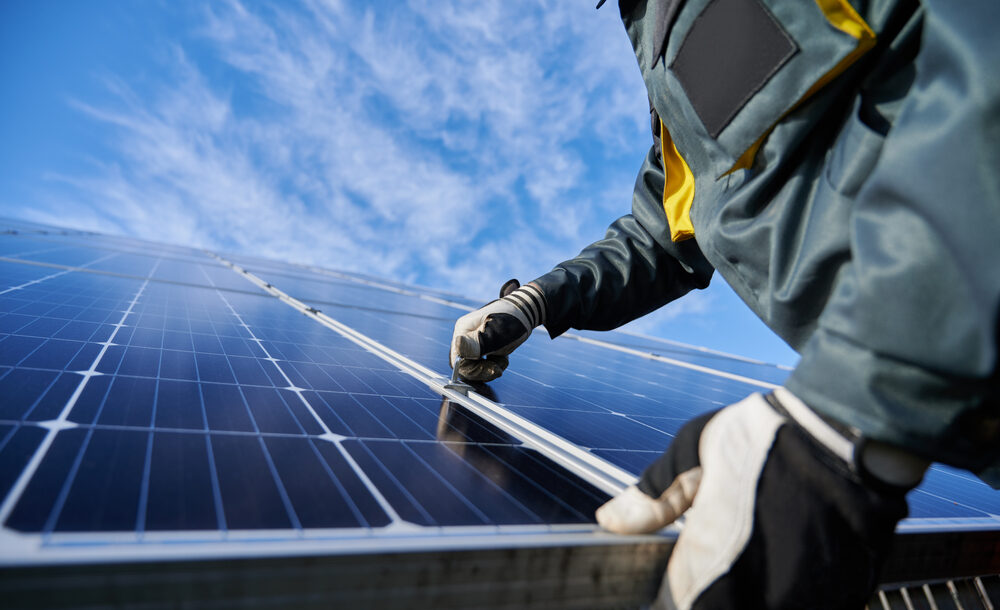When even Southern Company, the power giant whose utility service areas cover a large portion of the Deep South, makes a pledge to decarbonize its electricity system, you know that the idea has real momentum.
Today at the Bloomberg New Energy Finance Future of Energy Summit, Southern CEO Thomas A Fanning announced that his company’s fleet would be transitioning to “low-to-no-carbon” electricity sources by 2050.
“We are transitioning the fleet,” announced Fanning. “The dominant solutions will be nuclear… there will be renewables.” Fanning also addressed ongoing use of carbon capture and storage (CCS) technology.
And while Fanning noted that Southern is one of the largest owners of solar assets in the United States, there are potential conflicts between the company’s choices of nuclear power and solar and wind. And Fanning’s statements have made no bones about which resource the company is prioritizing.
“New nuclear in America should be a national imperative,” stated Fanning. Fanning also expressed concern about available capacities of energy storage to balance solar and wind. However, if a recent decarbonization plan by Duke Energy is any template, Southern may be preparing to keep existing nuclear power plants online and use this an excuse not to integrate higher levels of solar and wind.
The source of the issue here is an inherent conflict between nuclear power versus solar and wind at high penetrations. As explored in an article in pv magazine’s global print publication, commercially available nuclear power plants can ramp quickly, but doing so wears out components of the plants, and the fundamental economics of high capital costs and low operating costs – along with the forbiddingly high costs of nuclear power – make ramping impractical at best.
Costly solutions
And Fanning’s emphasis on nuclear ignores one broader reality of nuclear power in the United States. Will the plants Fanning envisions actually get installed? With the nuclear industry still reeling from the crisis at the V.C. Summer Nuclear Generating Station in South Carolina – with the state’s ratepayers on the hook for $9 billion – Southern Company may be creating a smokescreen of environmental consideration, set behind a technology with a high probability of failure.
The company got approval from Georgia’s Public Service Committee to complete the Vogtle Nuclear plants, which have ballooned to $25 billion in projected costs from the initial $14 billion projection. At the BNEF Summit, Fanning provided an interesting accounting angle to argue that this will not cost the state’s ratepayers.
“Westinghouse took a lot of the cost problem and went bankrupt,” explained Fanning.
But this is not the only impractical technology that Southern may be banking on. Fanning has also indicated that he sees a larger role for carbon capture and storage (CCS). Southern Company’s history with carbon capture is mainly one of failure – with costs greater than $7.5 billion at the collapsed Kemper County Power Generation Facility, again, being passed onto customer bills.
The CEO again relied on accounting switches when confronted with this fact. “We’ve wrote off many billions of dollars in Kemper,” stated Fanning.
Fanning also explained that CCS will also be important for gas, making it clear that the power giant will be seeking to modify its fossil generation fleet, not replace it.
This proclamation, by the third most polluting power company in the United States, shows how important it has become to create a greener image at many power companies. But given that Fanning’s reaction to cost issues with his two chosen technologies – CCS and nuclear – has been write-offs and bankruptcies, the math may not add up.
And while Southern had continued to build solar projects, the company’s promise for deep decarbonization is looking shaky at best.
This content is protected by copyright and may not be reused. If you want to cooperate with us and would like to reuse some of our content, please contact: editors@pv-magazine.com.









$25 billion plus $9 billion plus $7.5 billion = $41.5 billion. The solar industry spent somewhere around $25-30 billion installing 10-11 GW of solar power in 2017.
Let me note though that the $25-30 billion was spent on something that actually works, you know, at generating electricity.
Pretty cool concept spending money on things that work, eh?
Actually, at utility scale that $25-30B will get you 25-30GW of capacity.
Not to mention the fact that the generation will start now, not some mythical 10 years down the road.
Keep in mind that MILLIONS of our school tax money is siphoned off monthly to help bail out Southern Company and Georgia Power’s troubled plant Vogtle.
Two bills that would have exempted schools from paying extra to Georgia Power for its plant, now being called by more and more people, “The Vogtle Vortex”, went nowhere. [lobbyLizards anyone?]
Awareness of this misuse of Georgia school tax money is growing. Also growing is the disgust with taking our school tax money this way.
So maybe in 2019 the legislature will be more aware and more disgusted too, and pass a law that schools won’t have to keep bailing out Georgia Power for the Vogtle Vortex.
More info is at SaveSchoolMoney.org